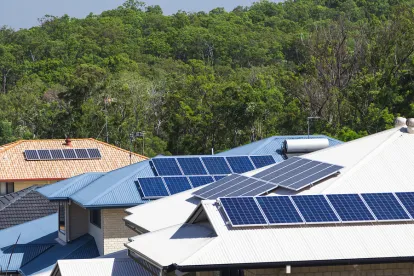The Problem: Finance Gap for Innovation Deployment
The last decade has seen tremendous innovations in cleantech that have not only brought new products, but also a fall in prices to consumers. For example, the average cost of solar panels has dropped from around $3.50/watt in 2005 to $0.36/watt today, an entire order of magnitude. From 2006 to 2014, worldwide average PV module prices have dropped about 78% from $3.25 per watt to about $0.72 per watt. The last five years alone have seen battery prices drop 72%.
Despite encouraging advances, the industry has seen a shortfall in matching capital to projects. According to Bloomberg New Energy Finance, clean energy investment is essentially right where it was in 2008. Further, according to the Steyer-Taylor Center, investments dropped 67% between 2011 and 2013.The sector needs capital increases to support and scale the many groundbreaking renewable energy ideas out there.
Solution: Consistent Financial Policy
For renewable energy to scale, government must offer consistent and reliable financial incentives for technologies to flourish. Below are just a few examples of government policies that can help scale up cleantech.
-
Although the Production Tax Credit (PTC) and the Investment Tax Credit (ITC) have heavily impacted cleantech investment for years, Congress often extends them on a short term basis, leaving little certainty for investors. On July 21st, the U.S. Senate approved a two year extension of the PTC through July 2016 – a companion bill must now advance in the House. Because the ITC does not expire until the end of 2016, Congress will likely address it in a 2017 tax reform negotiation. To avoid uneven investment drop-offs, the federal government should focus on permanent or long term solutions rather than stopgap measures.
-
Green Banks, public financing institutions that provide low-cost and long-term financing support to clean projects by leveraging public funds to attract private investment, are another example. Banks utilize tools such as long-term and low interest rate loans, revolving loan funds, insurance products, and low-cost public investments or they may even design new financial products. Connecticut and New York have led the way in this effort, but states such as New Jersey, Hawaii, Rhode Island, Maryland, and California have all proposed Green Banks or are employing a related idea (such as green bonds).
-
Connecticut: The Connecticut Green Bank was the first of its kind in the U.S. In 2014, the bank attracted a total investment of $225 million, leading to the creation of over 700 direct jobs and supporting about 40 MW of distributed energy resources. Its flagship program is The Commercial Property Assessed Clean Energy (C-PACE) program, providing owners of commercial, industrial, and nonprofit properties with 100%, low-interest financing to make energy efficiency and clean-energy improvements.
-
New York: Late in 2014, Governor Cuomo announced the first NY Green Bank transactions. Cuomo’s initial announcement included $800 million in investments expected to reduce CO2 by 575,000 tons annually. As of June 2015, the bank had received $734 million in funding requests – half from energy efficiency and the rest divided among wind, solar, and bioenergy projects.
-
-
PACE: Several states, including California, Florida, Michigan, and Rhode Island have started or are starting Property Assessed Clean Energy (PACE) programs. This system lets homeowners borrow money for energy efficient upgrades and pay it back incrementally on their property tax bills. The idea first picked up steam from the mid to late 2000s, but faced a setback in 2010 when the FHA’s operating agencies, Fannie Mae and Freddie Mac, refused to insure mortgages on houses possessing PACE liens. However, recently the federal government has moved to encourage PACE. In late August, President Obama directed the Federal Housing Administration (FHA) to allow homeowners to purchase and refinance properties with Property Assessed Clean Energy (PACE) loans that are subordinated to an FHA-insured mortgage.
All levels of government must also act as large scale early adopters. Leading by example is a surefire way for clean technology to flourish.
-
President Obama has led the way at the federal level. As part of his Climate Action Plan, he directed the Department of Interior to permit enough renewable projects to power 6 million homes by 2020, install 100 MW of renewables on federally assisted housing by 2020, and deploy renewables on military installations. The President followed this up with a March 2015 executive order calling for a 40% reduction in federal government greenhouse gasses by 2025.
-
Last September, New York City announced a plan for reducing its greenhouse gas emissions by 80% before 2050. Mayor Bill de Blasio has followed up with city government action. In July 2015, de Blasio announced he wants 100% of the city government’s energy provided by renewables. Planning to use the city’s $600 million electric bill to push innovation, the mayor put out an RFI. Proposals were due last month.
Solution: Matching Capital with Projects
Although large cleantech projects are particularly appealing to long term investors (LTIs), the need for direct investment in many of these projects requires sophisticated organizational and human resources that LTIs cannot always afford. Enter the Aligned Intermediary (AI), a non-profit corporation that would bring investors and inventors together to develop and coordinate priorities. Proposed functions for the AI could include:
-
Facilitator – The AI will reduce transaction costs and syndicate risk for LTIs by sourcing and screening appropriate companies.
-
Buy Side Advisor – AIs will bring LTIs the deals that match their needs and minimize use of internal LTI resources.
-
Collaborator – The AI will serve as the hub for key stakeholders.
-
Finance Expert – The AI will include investment experts that understand seed- and growth-stage investing.
-
Syndicator – The AI will create and structure deal flow with high potential for GHG reduction and financial returns.
-
Standardizer -The AI will bring standards and norms to the resource innovation financial markets, including standardized legal forms and structures for philanthropic investors.
-
Anonymizer – The AI will collect data on capital flows and returns stakeholders to better understand investment activity in the sector.
Simply put, an AI could get more human and financial resources on a more significant number of cleantech transactions. For a more in-depth look at AIs, see Alicia Seiger’s working paper from the Steyer-Taylor Center for Energy Policy and Finance.




 />i
/>i
